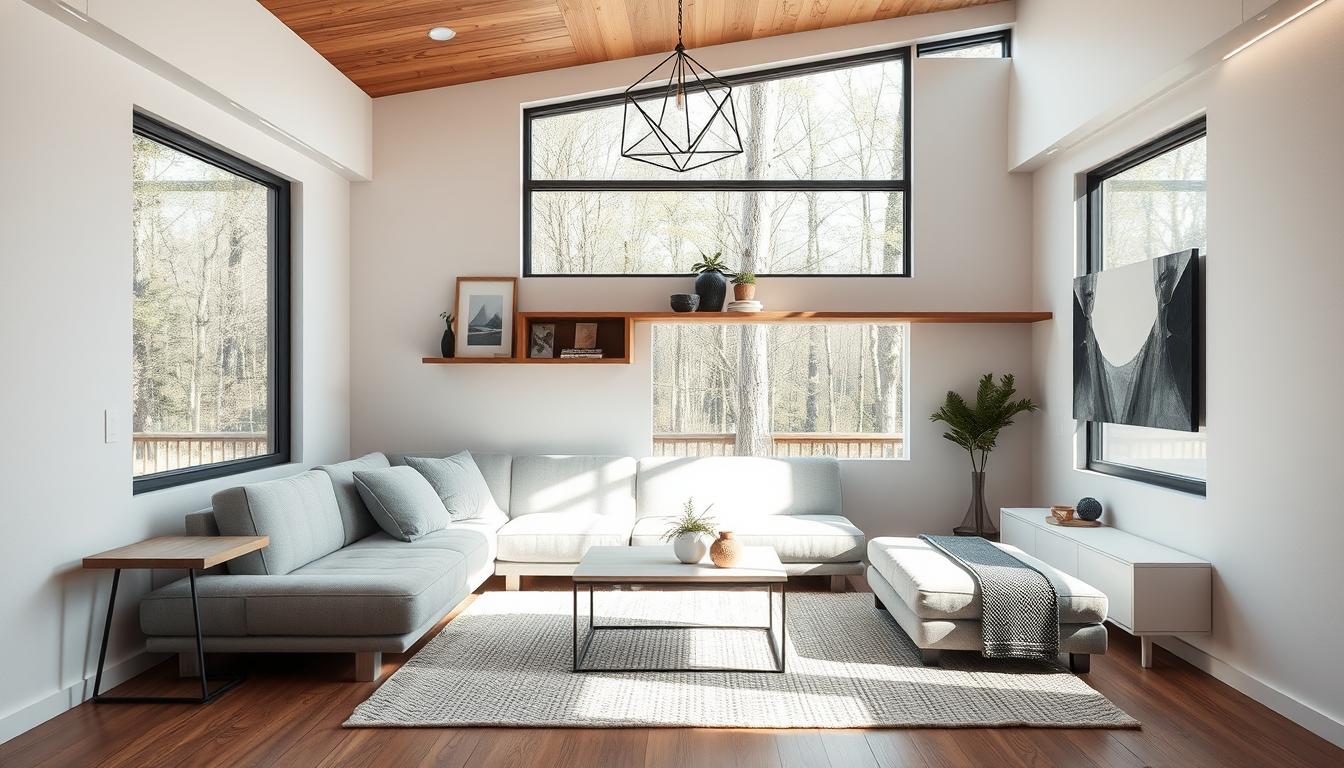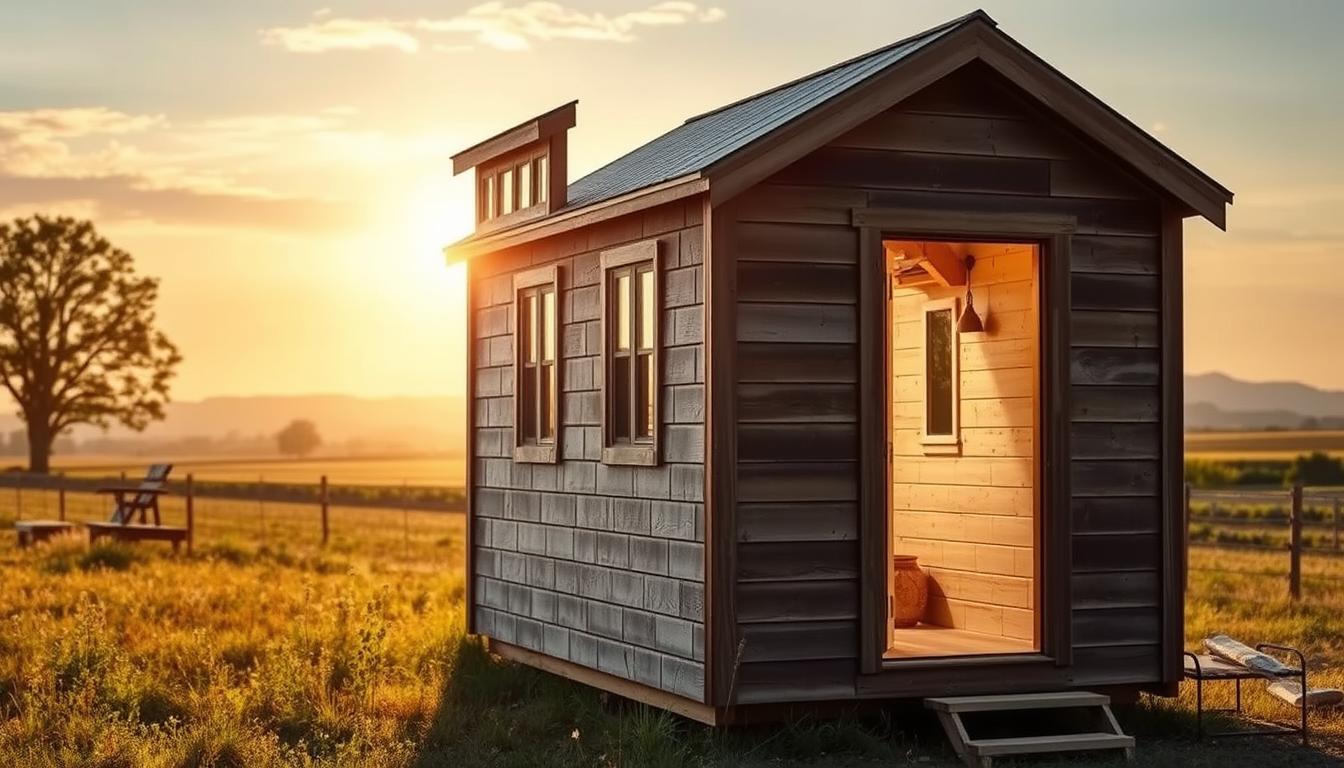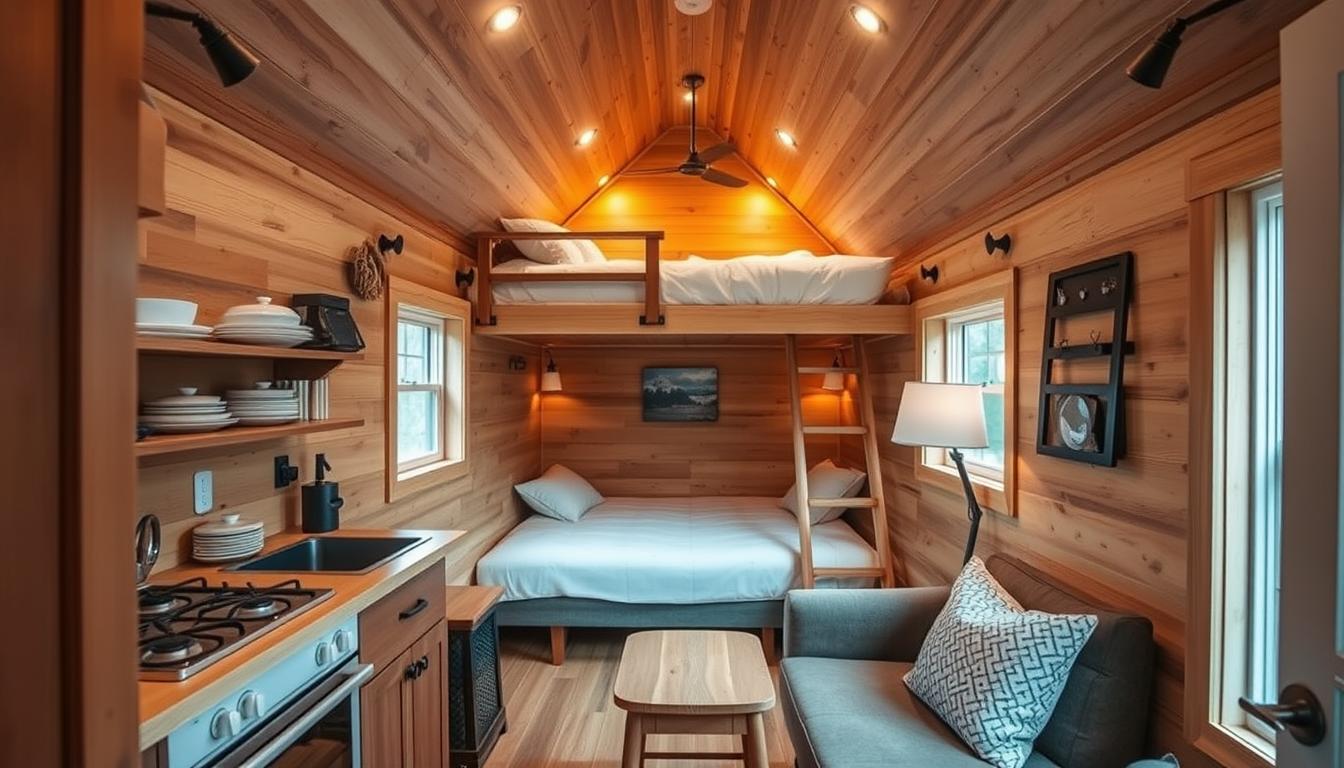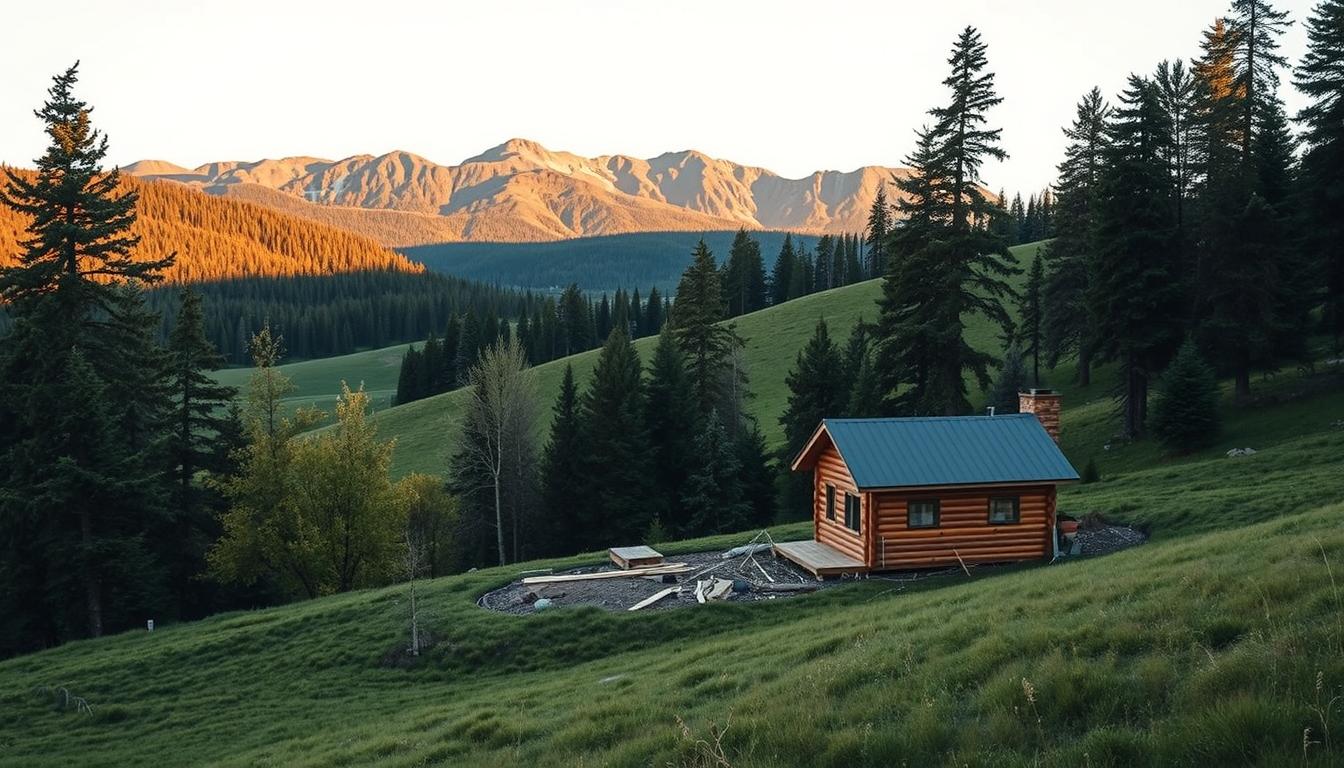Are you interested in sustainable and affordable housing? Then renting land for a tiny house might be a great solution for you. Renting land for a tiny house means that you can live a minimalist and eco-friendly lifestyle while having the flexibility to live where you want. In this comprehensive guide, we’ll cover everything you need to know about renting land for a tiny house, including its benefits, legal considerations, and how to find the perfect spot. So, if you’re ready to learn more about renting land for a tiny house, keep reading.
Benefits of Renting Land for Tiny Homes
Renting land for a tiny home offers several benefits, including:
Cost-effective Housing Solution
Renting land for a tiny home is a cost-effective housing solution, especially for those who are unable to afford traditional homes. The cost of buying land and constructing a traditional house can be prohibitive for many people. Renting land for a tiny house offers an affordable and sustainable alternative. You can save a significant amount of money on housing expenses, which can give you the financial freedom to pursue other goals.
Flexibility
Renting land for a tiny home provides flexibility in terms of location and design. You can choose to live in a rural or urban area, and you can design your tiny home to fit your specific needs and preferences. Additionally, because tiny homes are often custom-built, they can be designed to suit your unique lifestyle.
Sustainable Living
Renting land for a tiny home is a sustainable living solution that can help reduce your carbon footprint and contribute to a healthier planet. Tiny homes require fewer resources to build and maintain, and they are often powered by renewable energy sources such as solar panels. Moreover, tiny homes often have a smaller physical footprint than traditional homes, which means they take up less land and can contribute to preserving natural habitats.
Examples of Successful Renting
There are many examples of people who have successfully rented land for their tiny homes and have experienced the many benefits of this lifestyle. For instance, Jane rented a small plot of land from a local farmer and constructed her tiny home on it. She was able to save a significant amount on housing expenses and live a more sustainable lifestyle. Additionally, she was able to enjoy the peace and tranquility of living in the countryside while still being close enough to urban amenities.
By renting land for a tiny home, you can enjoy a simpler, more sustainable lifestyle while still having the flexibility and affordability that traditional housing solutions may not offer.
Regulations and Legal Considerations for Renting Land for Tiny Homes
Renting land for a tiny house is an attractive option, but there are legal considerations and regulations that you need to be aware of to ensure that you are renting land legally and safely. Here are some key legal considerations to keep in mind:
Zoning Regulations
Zoning regulations vary from one area to another and dictate where you can and cannot place your tiny home. It’s important to research these regulations before renting land for your tiny home to ensure that you are complying with the law. Some areas have specific zoning regulations for tiny homes, while others do not.
Building Codes
Building codes are in place to ensure that structures are safe and habitable. You need to ensure that your tiny home meets these codes before you move in. Building codes vary by location and can include requirements for electrical, plumbing, and ventilation systems.
Finding a Landowner
Another challenge of renting land for a tiny home is finding a landowner who is willing to rent their land for this purpose. Some landowners may be hesitant to rent their land for a tiny house due to concerns about zoning regulations, building codes, and liability issues. It’s important to find a landowner who is comfortable with the idea of a tiny home on their property and is willing to work with you to ensure that you are meeting all legal requirements.
Personal Experience
To provide a more in-depth and personal perspective on renting land for a tiny home, we spoke with several individuals who have rented land for their tiny homes. One renter, Sarah, shared her experience: “Renting land for my tiny home has been a great way to reduce my living expenses while still living sustainably. However, I had to do a lot of research to ensure that I was complying with zoning laws and building codes in my area. It’s important to find a landowner who is willing to rent their land for a tiny home, and to communicate with them regularly to ensure that you are meeting their requirements.”
Importance of Sustainability
Finally, when it comes to renting land for a tiny home, it’s important to keep sustainability in mind. By living a sustainable lifestyle, you can reduce your carbon footprint and contribute to a healthier planet. Installing solar panels, using a composting toilet, and harvesting rainwater are just a few examples of sustainable living practices that can be incorporated into your tiny home.
Finding Land to Rent for Your Tiny Home
Finding land to rent for your tiny home can be a challenge, but with the right resources and approach, it can be a rewarding experience. Here are some tips to help you find the perfect spot for your tiny home:
Online Resources
There are numerous websites dedicated to helping people find land to rent for their tiny homes. Websites like TinyHouseListings.com and TinyHouseFinder.net offer searchable databases of available land for rent or sale. These websites allow you to filter your search by location, price, and other criteria to help you find the perfect spot for your tiny home.
Negotiating Rental Agreements
When negotiating a rental agreement for land, it’s essential to be clear about your intentions and expectations. Make sure the rental agreement clearly outlines the terms of the rental, including the duration of the lease, the rental price, and any other relevant details. Be prepared to negotiate terms that are favorable to both you and the landowner.
Finding the Perfect Spot
When looking for land to rent for your tiny home, it’s important to find a spot that meets your specific needs. Consider factors such as location, size, and zoning regulations when searching for the perfect spot for your tiny home. Ensure that the land you choose is suitable for your tiny house, and that it meets all legal and safety requirements.
Importance of Communication
Communication with the landowner is also essential when renting land for a tiny home. You need to ensure that your tiny home meets their requirements and that you are on the same page in terms of expectations and responsibilities. Be sure to communicate clearly and regularly with the landowner to ensure a positive and successful rental experience.
Insider Tips:
- Consider reaching out to local tiny house communities for recommendations on land rental options. These communities may have established relationships with landowners or be aware of available land that is not publicly listed.
- Don’t be afraid to think outside the box when it comes to finding land to rent. Consider non-traditional locations such as rural farmland, suburban backyards, or even urban parking lots. With the right approach and negotiation, these can be excellent options for your tiny home.
Designing and Building Your Tiny Home for Land Rental
Designing and building a tiny home for land rental requires careful planning and consideration to ensure that the home is safe, legal, and meets the expectations of the landowner. Here are some tips to help you design and build your tiny home for land rental:
Work with a Professional Builder
Working with a professional builder who has experience in building tiny homes is essential to ensure that your home complies with building codes and regulations. Look for a builder who is licensed and insured, and who has a portfolio of completed tiny homes to show you.
Research Design Considerations
When designing your tiny home, consider factors such as size, shape, and materials. Keeping your tiny home compact and functional is key to making the most of the available space, while choosing durable, sustainable materials can help reduce your environmental impact.
Communicate with the Landowner
Clear communication with the landowner is crucial throughout the design and building process to ensure that your tiny home meets their expectations. Make sure to discuss any specific requirements they may have, such as the size or location of the home on the property.
Consider Building Codes and Regulations
It’s important to ensure that your tiny home complies with all local building codes and regulations. This may include requirements for electrical, plumbing, and ventilation systems, as well as safety measures such as smoke detectors and fire extinguishers.
Plan for Transport
If you plan to move your tiny home to the rental property, make sure to consider the logistics of transportation. Hire a professional moving company that has experience in transporting tiny homes, and ensure that your home is properly secured for transport.
Include Storage Solutions
Storage is a key consideration in tiny home design. Make sure to include plenty of storage solutions, such as built-in shelving, cabinets, and drawers, to help keep your home organized and clutter-free.
By following these tips, you can ensure that your tiny home is designed and built to meet your needs, comply with regulations, and provide a comfortable, sustainable living space on the rental property.
Sustainable Living in a Tiny Home
When it comes to renting land for a tiny home, sustainability should be at the forefront of your mind. Tiny homes offer an opportunity to live a more sustainable lifestyle by reducing your carbon footprint and embracing a more minimalist way of living.
Using Renewable Energy Sources
One of the most effective ways to make your tiny home more sustainable is by using renewable energy sources. Solar panels, wind turbines, and hydroelectric generators are all great options for powering your tiny home without relying on traditional utilities. These energy sources can help reduce your carbon footprint and make your tiny home more self-sufficient.
Reducing Water Usage
Conserving water is another important aspect of sustainable living in a tiny home. Installing low-flow faucets, showerheads, and toilets can significantly reduce your water usage. Additionally, using rainwater harvesting systems to collect and reuse rainwater can further reduce your reliance on traditional water sources.
Composting Toilets
Composting toilets are another great way to live a more sustainable lifestyle in a tiny home. They use natural processes to break down waste and turn it into compost, which can be used as fertilizer for plants. Composting toilets are a great alternative to traditional flush toilets, as they use significantly less water and can help reduce your environmental impact.
Embracing Minimalism
Living in a tiny home requires embracing a more minimalist lifestyle. By reducing your belongings and living space, you can reduce your environmental impact and live a more sustainable life. Embracing minimalism can also help reduce your energy usage and waste, as you’ll be using fewer resources overall.
Sustainable Landscaping
Sustainable landscaping is another important aspect of sustainable living in a tiny home. Planting native plants, using organic fertilizers, and incorporating rain gardens can all help reduce your environmental impact and create a more sustainable landscape around your tiny home.
By incorporating sustainable practices into your tiny home lifestyle, you can reduce your carbon footprint, live more self-sufficiently, and contribute to a healthier planet.
Conclusion
In conclusion, renting land for a tiny house is a sustainable and affordable solution that provides flexibility in terms of location and design. However, before embarking on this journey, it’s important to be aware of the legal considerations and regulations that come with it.
To ensure that you are renting land for your tiny home legally and safely, it is essential to do your research and stay informed. Working with a professional builder and communicating with the landowner are important considerations when designing and building your tiny house.
In addition, sustainable living is a key component of the tiny home lifestyle. By using renewable energy sources, composting toilets, and rainwater harvesting systems, you can reduce your carbon footprint and contribute to a healthier planet.
At OTH, we are committed to providing you with all the resources you need to make informed decisions about sustainable living. Check out our other articles and resources to learn more about sustainable and eco-friendly living solutions.
Renting land for a tiny house is an exciting and rewarding adventure that can provide you with a simpler, more sustainable life. By carefully planning and considering the legal and practical considerations, you can enjoy the many benefits of this lifestyle and contribute to a healthier planet.
Questions
Q. Who can I rent land for a tiny house from?
A. Landowners willing to rent their land for a tiny house. Some farmers and private property owners.
Q. What are the legal considerations for renting land for a tiny house?
A. Zoning regulations, building codes, and liability issues. Research and comply with them.
Q. How can I find land to rent for a tiny house?
A. Use online resources like TinyHouseListings.com. Reach out to local tiny house communities.
Q. Who can help me build my tiny house for land rental?
A. Professional builders experienced in building tiny homes. Look for licensed and insured builders.
Q. What are some sustainable living practices in a tiny home?
A. Using renewable energy sources, composting toilets, and rainwater harvesting systems. Embracing minimalism.
Q. How can I convince a landowner to rent their land for a tiny house?
A. Communicate clearly and regularly. Address their concerns about zoning and building codes. Offer to sign a lease or contract.
As someone who has been actively involved in the sustainable living movement for several years, I have gained a wealth of knowledge and experience in this area. My passion for tiny homes and sustainable living was sparked when I stumbled upon a study that revealed how the average American home produces 20 metric tons of carbon dioxide emissions per year. This led me to start researching alternative housing options that were more sustainable and affordable, and eventually, I stumbled upon tiny homes.
Over the years, I have attended numerous conferences and seminars on sustainable living and have even presented my own research on the benefits of tiny homes at one such conference. I have also volunteered with several organizations that promote sustainable living and have worked with individuals and communities to help them transition to more sustainable lifestyles.
My knowledge and experience in this area have allowed me to provide valuable insights and advice on renting land for tiny houses. I have also researched and analyzed various studies and sources to ensure that the information provided in this article is accurate and trustworthy.










